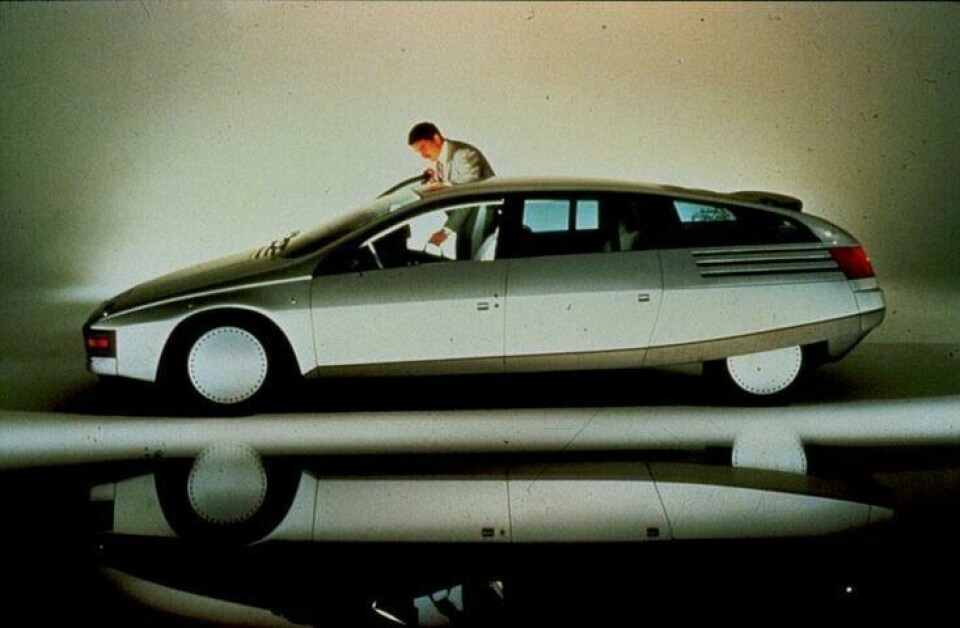
Lincoln Quicksilver (1983)
A forgotten concept from an era of radical aerodynamic experiments
In the early 1980s Ford began an extensive search into the development of aerodynamic cars that would influence its design language for the next decade. Developed with Carrozzeria Ghia, then a division of Ford, much of what was learned was displayed in a series of concept cars named the Probe.
But another concept car to emerge from these explorations was one unique to its marque, the Lincoln Quicksilver of 1983. First appearing at the Geneva motor show, the Quicksilver was a five-passenger mid-engined luxury sedan with a unique aerodynamic shape.
The Quicksilver was built, oddly enough, on an AC ME 3000 chassis, stretched some 280mm. The AC also loaned the Quicksilver its mid-engined layout, which was fitted with Ford’s three-litre V6 mated to a five-speed transmission, making it probably the first manual Lincoln in a generation.

Over the mechanicals was placed an aerodynamic body. At first glance the car appears to be an estate wagon, but the extra glasshouse in the rear stretches over the mid-mounted engine, and then drops almost vertically in a Kamm-type tail. The glasshouse itself was the latest version of Ford’s aerodynamic flush-mounted glazing system. The front end sloped precipitously to a vertical fascia which acted as an air dam at the front of the car. The headlights retracted into the hood (or trunk, as it were). The sleek silhouette was very aerodynamic for the time, having a Cd of just 0.30.
It is worth noting that the Quicksilver was a direct beneficiary of the ongoing Ford/Ghia aerodynamic studies and the Probe concept series. The Ford Probe IV, developed at the same time, looks strikingly similar to the Lincoln. Indeed, if the two cars were placed side-by-side, it would look as though the Quicksilver was the production version of the Probe IV.

On the interior, the Quicksilver displayed a décor very different from production Lincolns of the time. A typical 1983 Town Car or Mark VI had a very formal rectangular design of all interior elements from door cards to instrumentation. So relentless was this rectangularity that the one round element – the steering wheel – seemed strangely out of place. The Quicksilver’s instrument panel is just the opposite. It is a composition of circles, with a constellation of round analogue gauges arrayed around the center point of the steering wheel. Two overstuffed seats flank a centre console that held more controls along its centerline, and in front of this, an actual gear shifter, a strange retro/throwback element for such a futuristic concept.

The Quicksilver toured the auto shows, and proved so popular that it remained on the show circuit until 1986. But there was never any consideration of production. Its styling was too radical, too European, too “Citroën-esque” for American tastes, particularly the Lincoln owner demographic. Even the choice of a Lincoln badge seems a mystery. Perhaps Ford did not want this car confused with the radical and popular Probe concept series. In any case, both the Quicksilver and the Probe IV were soon to be upstaged by the even more aerodynamic and futuristic Probe V.

As for the Quicksilver itself, it was stored with many of the Probe concept cars and then was sold in 2014, with the proceeds donated to charity. It now rests in a private collection – hopefully someday to emerge as provocative inspiration for a new generation of Lincoln cars.



